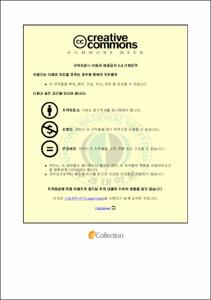초등학교 6학년과 중학교 1학년 영어교과서 듣기 활동 유형 및 연계성 분석
- Abstract
- Abstract
The purposes of this study are ⅰ) to examine the frequency of listening tasks in the English textbooks of elementary and middle schools, ⅱ) to classify listening tasks based on eight listening achievement criteria from the revised 7th national curriculum, and ⅲ) to analyze the connectivity of listening tasks in the English textbooks of elementary and middle schools. This thesis will help to develop listening tasks in textbooks and to make English textbooks with .
For this analysis, four kinds of elementary school English textbooks (ESET) and 4 sets of middle school English textbooks (MSET) were analyzed following the criteria of Underwood (1989), Willis (2007) and Nunan (1999). In addition, listening activities were classified following the listening achievement criteria of the revised 7th national curriculum.
The results of this analysis are as follows:
First, in ESET, a ‘looking at pictures’ activity most frequently appears among pre-listening tasks. In while-listening tasks, ‘matching or finding pictures’ (29.3%), ‘repeat’ (24.3%) and ‘grasping specific information from texts’ (21%) activities are frequently found. A 'Playing game’ (48.2%) activity is frequently presented as a post-listening task.
Second, among the pre-listening tasks in MSET, a ‘sharing personal experiences and thoughts’ (19.1%) activity is frequently found. Then comes ‘looking at pictures’ and ‘fact finding’, respectively. While main textbooks have various pre-listening tasks, activity books have only two types of pre-listening tasks. These are ‘previewing the language’ (63%) and ‘broadening background knowledge’ (37%). Among while-listening tasks, ‘matching or finding pictures’ (33.4%, 34.2%) more commonly appears than any other activities in both textbook and activity books. ‘Talk and discussion’ is the most frequent activity of post-listening activities in both the textbooks (45.6%) and activity books (44.9%).
Third, the common achievement criterion of listening activities in ESET is to recognize specific information from simple dialogues (54.1%). Over 70% of listening activities in MSET are also focused on the same listening achievement criterion as ESET. According to the results of this study, the other achievement criteria are mostly overlooked.
Fourth, listening tasks are less connected in terms of listening task types and listing achievement criteria. While listening activities in ESET are mostly focused on activities presented with visual materials in pre-listening and while-listening, activities in MSET are more various. The listening achievement criteria of ESET and MSET have the same problem: their activities concentrated on recognizing specific information.
With the above findings, the following is suggested:
First, it is necessary to select and make various listening activities for elementary and middle school textbooks. The listening tasks of elementary school English textbooks are not various. Instead, they only focus on activities with visual materials and games. Because students encounter only a few different types of listening activities in elementary school, listening activities at the middle school are too unfamiliar. For this reason, students are likely to have difficulty in performing listening tasks when going on to higher grades. Therefore, the listening activities of elementary and middle schools should be varied.
Finally, the achievement criteria for listening should be more specific. If the achievement criteria are diversified, a number of different listening activities will be presented in textbooks in order to satisfy these criteria. This will provide a variety of listening experiences for students.
- Issued Date
- 2013
- Awarded Date
- 2013. 2
- Type
- Dissertation
- Publisher
- 부경대학교
- Affiliation
- 부경대학교 교육대학원
- Department
- 교육대학원 영어교육전공
- Advisor
- 오준일
- Table Of Contents
- 목 차
Abstract ⅳ
Ⅰ. 서론 1
1.1 연구의 필요성 및 목적 1
1.2 연구 문제 3
1.3 연구의 제한점 3
Ⅱ. 이론적 배경 5
2.1 듣기 5
2.2 듣기과업유형분류 7
2.2.1 과업의 정의 8
2.2.2 Underwood의 과업유형 9
2.2.2.1 듣기 전 활동 9
2.2.2.2 듣기 중 활동 11
2.2.2.3 듣기 후 활동 14
2.2.3 Willis의 과업유형 16
2.2.4 Nunan의 과업유형 20
2.3 2007년 개정교육과정 23
2.3.1 초등학교 6학년 영어 듣기 성취기준 24
2.3.2 중학교 1학년 영어 듣기 성취기준 25
2.4 듣기과업 분석 선행연구 27
Ⅲ. 연구방법 31
3.1 분석대상 31
3.2 분석기준 35
3.2.1 듣기활동유형분석기준 35
3.2.2 2007년 개정교육과정 성취기준에 따른 분석기준 41
3.3 자료수집 및 분석 49
Ⅳ. 결과분석 및 논의 51
4.1 듣기과업유형 분석 및 논의 51
4.1.1 초등학교 6학년 듣기 활동유형 분석 및 논의 51
4.1.1.1 듣기 전 활동 51
4.1.1.2 듣기 중 활동 53
4.1.1.3 듣기 후 활동 56
4.1.2 중학교 1학년 듣기 활동유형분석 및 논의 58
4.1.2.1 듣기 전 활동 59
4.1.2.2 듣기 중 활동 63
4.1.2.3 듣기 후 활동 67
4.2 듣기활동 유형 연계성 분석 71
4.3 2007년 개정교육과정 성취기준에 따른 분석 및 논의 75
4.3.1 초등학교 6학년 듣기 성취기준에 따른 분석 및 논의 75
4.3.2 중학교 1학년 듣기 성취기준에 따른 분석 및 논의 77
Ⅴ. 결론 및 제언 82
참고문헌 86
- Degree
- Master
- Files in This Item:
-
-
Download
 초등학교 6학년과 중학교 1학년 영어교과서 듣기 활동 유형 및 연계성 분석.pdf
기타 데이터 / 1.34 MB / Adobe PDF
초등학교 6학년과 중학교 1학년 영어교과서 듣기 활동 유형 및 연계성 분석.pdf
기타 데이터 / 1.34 MB / Adobe PDF
-
Items in Repository are protected by copyright, with all rights reserved, unless otherwise indicated.